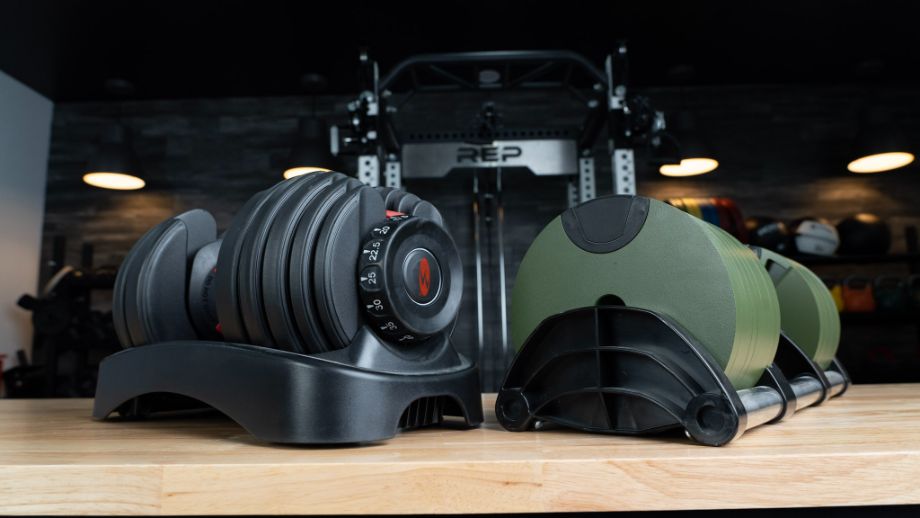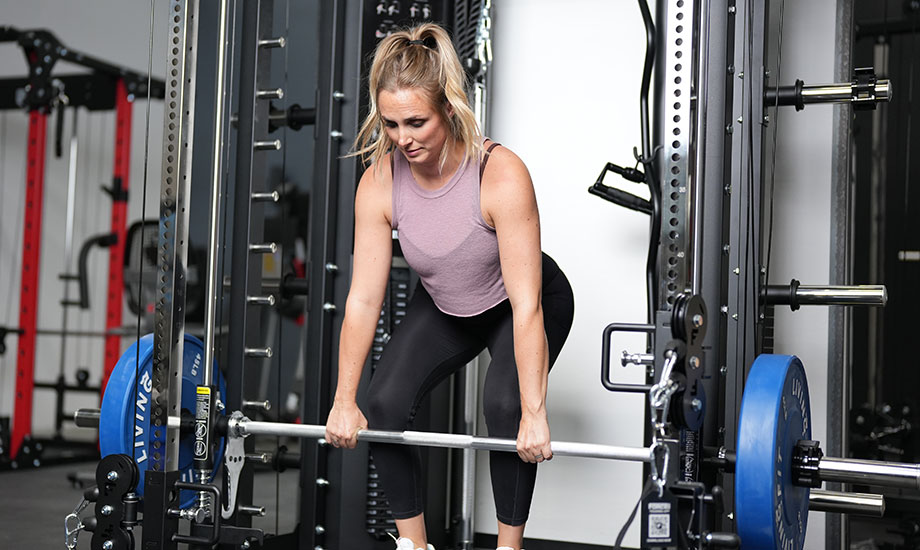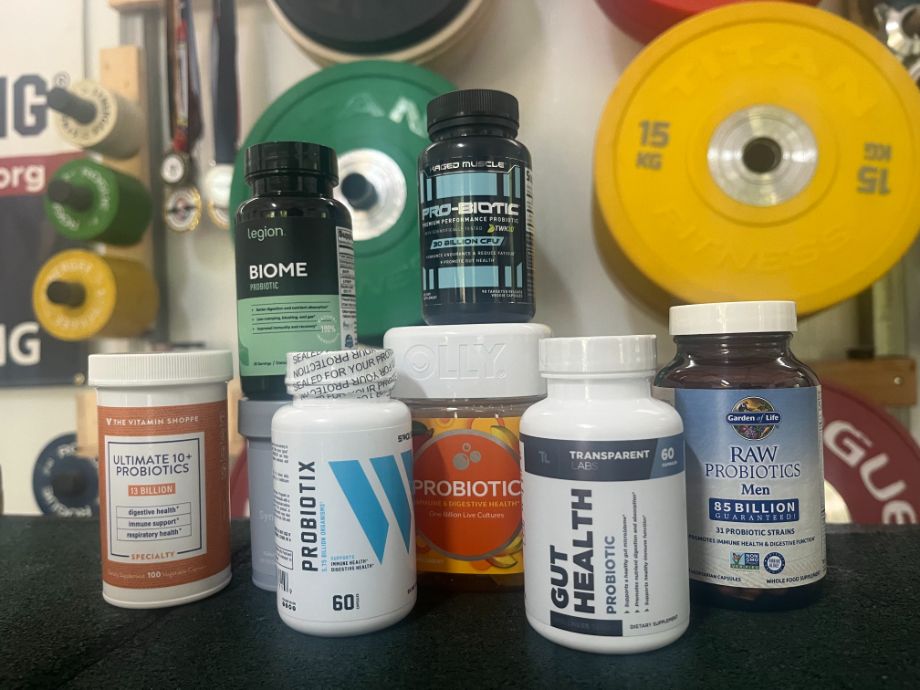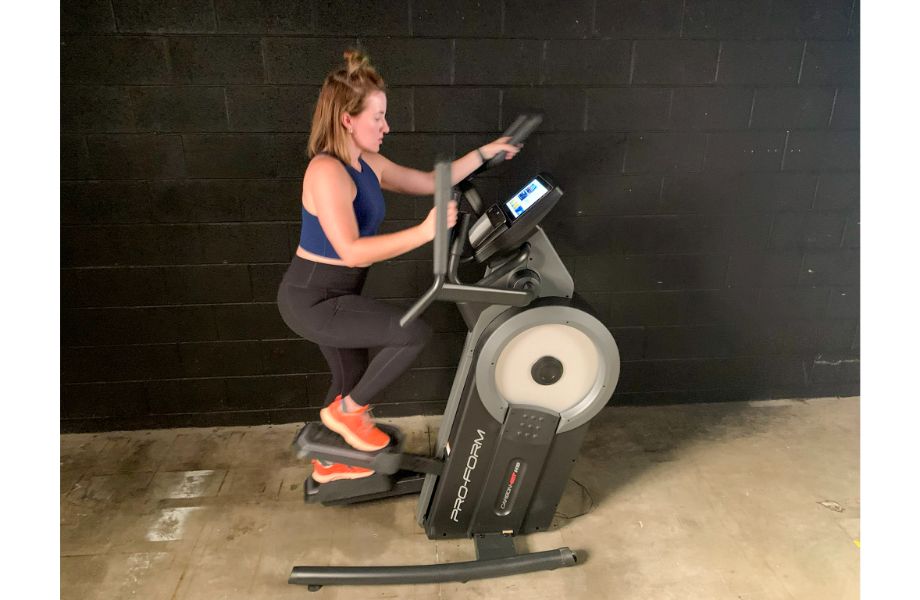In a recent data study our team conducted, we found that 61% of people have some form of a home gym. For some people, being able to control gym cleanliness may be a reason to exercise at home. And home gym germs should be a better alternative to the worn-down machines collecting sweat at your local Planet Fitness.
But is home gym equipment as clean as we think? Do home gym owners have appropriate gym hygiene? To answer that question, our team collected data from 13,000 respondents and enlisted microbiologist Amy-May Pointer to analyze people’s home gym equipment cleanliness. We dug deeper into our findings with help from medical officer Dr. Zeeshan Afzal to provide context and explain what it all means.
The results uncover how often people clean their home workout equipment, the gym germs that live on them, and what it means for your health.
Key Findings:
- 85% of home gym owners do not pass the medically recommended weekly cleaning requirements
- 8% clean their gym equipment once a week
- Only 7% take steps to clean their workout equipment every time they are done working out
Your Home Gym is Dirtier Than You Think
Since growing bacteria typically isn’t visible, you might be lured into thinking it doesn’t exist. The fact of the matter is that you should clean your gym regularly, and our data proves there is definitely room for improvement.

Out of 13,000 people surveyed, 64% of people say they “barely ever” take steps to clean their gym equipment. Only 8% of people clean their dirty gym equipment once per week. Considering the amount of time and money that goes into implementing home gym ideas, you’d think taking measures to keep the space clean would be more of a priority.
Top Gym Equipment Germs Found on Home Gyms
To assess the types of bacteria living on home gym equipment, we asked three of our Garage Gym Reviews staff members to get involved. They each swabbed three pieces of equipment in their own home gyms and followed instructions to allow the bacteria to grow in petri dishes. We then asked our microbiologist to analyze the results.
Our research shows some unexpected bacterial residents living on our home gym equipment. While we did find typical gym germs (i.e., Streptococcus and Bacillus species), there were also some surprises. Here are our most notable bacterial and fungal callouts:

#1 Staph (Staphylococcus aureus)
Where we found it:
- Exercise mat
- Kettlebell
- Rowing Machine
Where it is commonly found:
- Toilet seats
- Bus railings
- Public restrooms
Staph bacteria can spawn diseases ranging from mild skin infections to life-threatening illnesses. Small amounts, however, should be harmless. Microbiologist Pointer adds that sweating and shedding skin cells during a workout can transfer bacteria to gym equipment.
While you may associate staph with hospitals and other high-traffic public spaces, this bacteria can easily hitch a ride from public restrooms to your home gym if you don’t wash your hands. Even though you might think the risk of bacteria in your home is minimal, we don’t think anyone would feel safe working out in a public bathroom.
Dr. Afzal recommends disinfecting your equipment after each use, maintaining clean workout towels, and practicing proper hygiene to reduce the risk of infection.
#2 Mucor spp. And Rhizopus spp.
Where we found it:
- Dumbbell
Where it is commonly found:
- Dead animals
- Compost piles
- Rotting fruits and vegetables
These fungi were a gross discovery in our testing as they are typically found on decaying natural matter like dead animals and compost piles. While these aren’t too common in commercial gyms, it is not a huge surprise to see them pop up, as many people expose themselves to environmental fungi when working out outside or in a garage gym.
Pointer poses multiple theories, including transmission through airborne spores from other locations and lack of regular cleaning. While small amounts won’t cause a significant health risk, it is wild to know that the fungi found on rotting corpses could also be on your dumbbells.
#3 Bacillus cereus
Where we found it:
- Exercise bike
Where it is commonly found:
- Rice
- Vegetables
- Spices
Bacillus cereus is a common culprit of food contamination, associated more with foodborne illnesses and not gym environments. This bacteria lives in areas where food is improperly stored or handled. Your home gym is more likely than a commercial gym to be a nesting ground due to the higher presence of food bacteria (i.e., in the kitchen, dining room, etc.). According to Pointer, some strains can produce toxins that cause diarrhea and vomiting.
#4 Serratia marcescens
Where we found it:
- Medicine ball
Where it is commonly found:
- Hospitals
- Water
- Soil
Serratia marcescens poses a risk for opportunistic infections, meaning those with healthy immune systems should not worry. However, you may be more susceptible to wound infections if you have underlying health concerns or work out with open cuts. Exposure to minimal amounts should not be much of a health risk.
Pointer elaborates, “Gym users might carry the bacteria on their hands from contact with contaminated surfaces or substances and then transfer them onto the ball during use. Moreover, since Serratia marcescens can survive on both moist and dry surfaces, it can live on the ball’s surface for extended periods.”
What Home Gym Equipment Is the Dirtiest?
When we swabbed our gym equipment, we analyzed the number of bacteria or fungi found on each piece. The results below showcase which gym equipment we found to be the dirtiest (ranked from dirtiest to cleanest).

| Rank | Equipment Type |
| 1 | Dumbbell |
| 2 | Kettlebell |
| 3 | Barbell |
| 4 | Bike |
| 5 | Treadmill Console |
| 6 | Ball |
| 7 | Rower |
| 8 | Jump Rope Handles |
| 9 | Exercise Mat |
According to our findings, the hotspots for germs were the bike, the barbell, kettlebell, and the dumbbell. This makes sense, as there is a lot of skin contact on those pieces.
The cleanest piece of equipment? The exercise mat. This surprised us, as exercise mats are often made of some type of foam that you would think would be harder to clean than metal or plastic gym equipment.
According to Pointer, “The real microbial hotspots were the bike, the barbell, kettlebell, and the dumbbell, each hosting a wide variety of bacterial and fungal colonies, including presumptive Aspergillus niger, presumptive Bacillus cereus or subtilis, and presumptive Micrococcus luteus.” She notes that the most surprising callout was, “The exercise mat, often considered a hotspot for microbial activity, emerging as the cleanest piece of equipment.”
How to Clean Gym Equipment
When dealing with issues regarding health and safety, it’s better to be safe than sorry. For best practices with cleaning, remember, “When in doubt, wipe it down.” We recommend using antibacterial wipes or spray as the best way to keep your gym clean.
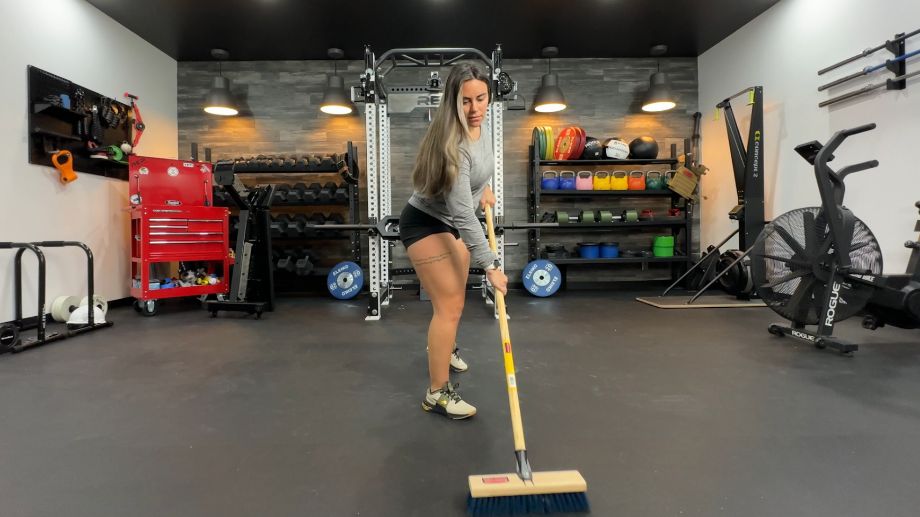
Disinfecting, Sanitizing, and Sterilizing
When discussing proper gym maintenance, it’s essential to distinguish the commonly used descriptors. Below we have outlined frequently used cleaning vocabulary and what it means:
- Disinfecting: Refers to using chemicals or physical means to eliminate bacteria and other microorganisms on objects. They may not kill every type of germ present, but they get rid of the vast majority. Disinfecting is common to prevent infections in healthcare, home, or public settings.
- Sanitizing: Refers to reducing microorganisms to appropriate levels in accordance with public health standards. In layman’s terms, you are trying to eliminate enough germs so your equipment is safe.
- Sterilizing: Refers to the most intense cleaning process where all forms of bacteria, viruses, fungi, and spores are removed. Sterilization is the “cleanest” version of the three terms. This generally refers to hospital and laboratory settings.
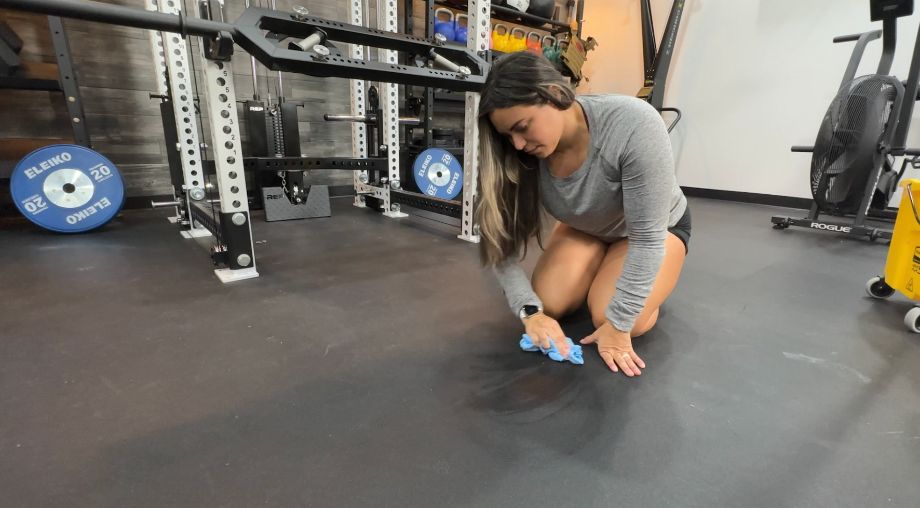
General Gym Equipment Cleaning Tips
Dr. Afzal provided some general cleaning tips to keep your home gym in tip-top shape:
- Use disinfectants against specific bacteria and fungi
- For more frequent use of equipment like dumbbells, exercise balls, and kettlebells, you should disinfect your equipment after every use
- Be sure to follow the manufacturer’s instructions for proper use
- Wash hands before and after using equipment
- Use clean towels and mats consistently
- Maintain proper hygiene practices
- Ensure proper ventilation to keep the gym area dry
- Clean and disinfect all equipment surfaces
- Store equipment in a clean, dry area
Here are a few cleaning resources from our team to help with guidance regarding cleaning specific equipment and general gym cleaning.
Final Thoughts
Cleaning gym equipment may not be the most exciting way to spend time in your home gym, but taking small steps every day or week is crucial in maintaining a healthy workout environment. According to our survey, 85% of people aren’t taking steps to clean up their home gyms. We at Garage Gym Reviews wanted to remind everyone that taking an extra 10 minutes to disinfect their equipment, floors, and home workout areas can go a long way in promoting proper health for you and your loved ones.
Methodology
Garage Gym Reviews surveyed 13,000 people on how often they clean their home gym equipment and home gym floors. We swabbed nine pieces of gym equipment in three different locations and analyzed the germs found with the help of microbiologist Amy-May Pointer. We enlisted Dr. Afzal to provide further context on our findings and explain best practices for maintaining a healthy home gym environment. All findings from this study are presumptive based on visual inspections from Pointer but not confirmation of the presence of a particular colony.
Fair Use Statement
If you have any questions about the information mentioned above or are interested in an interview, please feel free to get in touch with Jonathan Weissberg (jonathan@email.garagegymreviews.com), the fitness research associate at Garage Gym Reviews.
You are welcome to use any of the findings, data, and graphs from this report, but we do ask that you please provide a link back to our study to cite the original data source.



